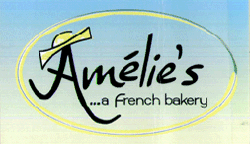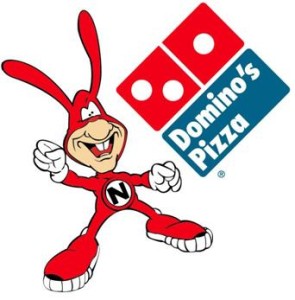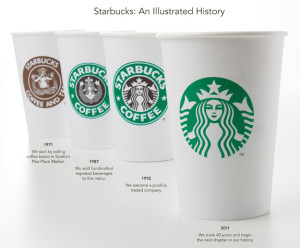Chipotle: Cultivating a Better World
Back in June, I wrote about my undying love of Chipotle and its brand.
I wrote about the company’s original short film, released in 2011 and entitled, “Back to the Start.” The film, by film-maker Johnny Kelly, depicts the life of a farmer as he slowly turns his family farm into an industrial animal factory before seeing the errors of his ways and opting for a more sustainable future. Both the film and the soundtrack were commissioned by Chipotle to emphasize the importance of developing a sustainable food system. The video reached more than four million views on YouTube when it aired during the 2012 Grammy Awards (in its entirety, 2 minutes and 20 seconds). At present, the video has a whopping 7.8 million views.
Fast-forward two years and so many months later to “The Scarecrow.”
I came across this new short film when it launched last Thursday, Sept. 11 and was in absolute awe. From the hauntingly beautiful Fiona Apple singing a childhood favorite, “Pure Imagination,” to the amazingly profound storytelling, I was hooked. Only Chipotle could weave a story that seems so simple, but is, in turn, a profound critique of our food industry. See for yourself.
Oh, and did I mention it’s based around marketing for a game? In collaboration with Academy Award-winning Moonbot Studios, “The Scarecrow” is an app-based, arcade-style adventure game that depicts a scarecrow’s journey to bring wholesome food back to the people by providing an alternative to the processed food that dominates his world (click here for a behind-the-scenes look). Here’s the official game description off its website.
The Scarecrow needs your help to foil the evil plans of Crow Foods and break the crows’ monopoly on food production and supply in the city of Plenty. Tilt your device to navigate through each level, outsmart the Crowbots, unlock extras, and restore hope for animals, farms, and the environment, while providing the citizens of Plenty a healthy and delicious alternative.
The buzz from Chipotle’s latest marketing coup is substantial. A simple Google News search for Chipotle and scarecrow returned more than 6,000 results. Every element has been meticulously thought through:
- Download Fiona Apple's cover of “Pure Imagination” from iTunes and proceeds ($.60 per download) go to the Chipotle Cultivate Foundation, which provides funding to support sustainable agriculture, family farming, and culinary education.
- Earn at least three stars on every level of the game and score a BOGO card for a Chipotle burrito, bowl, salad or order of tacos (while supplies last, sure, but who doesn’t love free food?).
And, all of the copy surrounding this campaign is clear and concise – case in point:
“The Scarecrow” is another chapter in our commitment to Food With Integrity, and represents what we aspire to accomplish through this mission. Our goal for “The Scarecrow” is to bring awareness of important issues to a broader audience, and we hope it entertains you as much as it makes you think.
Smart. Thought-provoking. Inspirational.
To leverage even more success, I’m curious to see if it runs during the Emmy Awards broadcast this weekend. It may have already netted more than 4.8 million YouTube views, but a primetime audience could mean a repeat of its initial “Back to the Start” success (and then some, especially considering the buzz is so big already). I’ll definitely keep an eye out.
So, how does this kind of campaign define Chipotle’s brand and tell its story? From a bigger branding picture, why does it matter? It’s rare for a large company to be so self-aware and smart that it builds a brand where it doesn’t have to blatantly use its own name in marketing and advertising. Chipotle relies on the wholesomeness of its food and emphasizes the importance of its cause to tell its overall brand story. From a bigger branding perspective, Chipotle’s success means more and more companies may need to figure out how to use similar tactics to build their own brands – and, for new companies, it’s a great example of the importance of working hard to do things right.
# # #
Sources
“The Scarecrow,” ScarecrowGame.com, https://goo.gl/dTwNGV.
“The Scarecrow – Chipotle Mexican Grill.” MoonbotStudios.com, https://goo.gl/cOUhkK.
On Target: New 'Simply Balanced' Brand
While wandering around Target this weekend, I stumbled across a shiny, new brand, ‘Simply Balanced.’ Intrigued by the clean packaging, I wondered out loud, “What is this? I haven’t seen this brand before.” A Target employee was working in the same aisle and gave me a quick history lesson- the cleaner, fresh brand was replacing Archer Farms Simply Balanced line. (Confession: In all of my Target shopping, I never noticed an Archer Farms sub-brand product line, so I immediately felt the introduction of a stand-alone brand, separate from Archer Farms, was a good idea.)
When I came into work this morning, I did some digging on the new line. It looks like the brand was officially launched last month “…in response to the growing popularity of organic foods.”
The products include wholesome ingredients, and more than 40 percent of the assortment is organic. There are no products with hydrogenated or partially hydrogenated oils, high-fructose corn syrup, synthetic colors, artificial preservatives, artificial flavors or artificial sweeteners. And, the majority of Simply Balanced items are made without genetically modified organisms (GMOs).
From a brand perspective, this reflects a broader push by supermarkets and big-box retailers to improve the image of their store brands. Consumers have become increasingly accepting of store brands not merely as good values, but as just plain good. And they’re willing to pay more, at least compared with the old no-name brands of the past.
So, why did this brand catch my eye? At the simplest glance, the packaging has gotten a complete overhaul.
From old…
…to new…
And of course, one look at the ingredients made me quite happy to see Target committing to healthier food options.
To ensure understanding, Target has gone a step further and created frequently asked questions about the Simply Balanced brand. The positioning statement is clear and concise: The heart of the Simply Balanced brand is that it’s great-tasting, wholesome food with simple and recognizable ingredients.
And, Target’s site has a section dedicated to Simply Balanced. There are recipes using Simply Balanced products, as well as money-saving coupons.
We’ve written about private label brands several times on this blog, and I think this is a bit of a peek into the future. The bland, lower quality, boring store brands are history, and new, swankier, smarter brands are becoming a reality.
Sources
“Simply Balanced: Target’s wellness grocery brand,” Corporate.Target.com, https://goo.gl/15VNL
“Target To Launch Organic 'Simply Balanced' Brand,” HuffingtonPost.com, AP, https://goo.gl/FXBUf
“The Rise of the Swanky No-Name Brand,” Business.Time.com, Brad Tuttle, https://goo.gl/KLT9R
“Simply Balanced: Frequently Asked Questions,” Target.com, https://goo.gl/HGQR9
“Introducing Simply Balanced,” Target.com, https://goo.gl/0NjMf
Brands We Love: Chipotle
I. love. Chipotle. There, I said it. And no, I’m not referring to the pepper, but the mouth-wateringly delicious Mexican grill.
The best part is, it goes beyond the food. I love the cheekiness of Chipotle’s brand, but the fact that it’s mixed with a “Food With Integrity” mission, I have become the most loyal of brand advocates.
But first, a little history: In 1993, Chipotle was founded by Steve Ellis in Colorado. Ells and his father calculated that the store would need to sell 107 burritos per day to be profitable. After one month, the original restaurant was selling over 1,000 burritos a day.
Chipotle’s menu consists of four simple options: burritos, burrito bowls, tacos and salads. And, four types of protein: chicken, pork carnitas, barbacoa (spicy, shredded beef) or steak (and of course, customers have the ability to make a vegetarian option as well).
Why such a limited menu? Steve Ells has said, “[I]t's important to keep the menu focused, because if you just do a few things, you can ensure that you do them better than anybody else.”
Well put. So, what about the brand?
First and foremost, a little more info on Chipotle’s “Food With Integrity” mission.
Food With Integrity is our commitment to finding the very best ingredients raised with respect for the animals, the environment and the farmers. It means serving the very best sustainably raised food possible with an eye to great taste, great nutrition and great value.
It means that we support and sustain family farmers who respect the land and the animals in their care. It means that whenever possible we use meat from animals raised without the use of antibiotics or added hormones. And it means that we source organic and local produce when practical. And that we use dairy from cows raised without the use of synthetic hormones.
Food With Integrity is a journey that started more than a decade ago and one that will never end.
Quite a bold statement for a fast,casual dining chain.
And then there’s the physical branding. The packaging is irreverent and hilarious. The cups and bags tell a story, providing a little entertainment while you nosh on your burrito.
And, for the design nerds out there, you’ll find “Lorem ipsum” placeholder text on the larger carryout bags. (Huge props go out to Sequence, the creative development agency responsible for Chipotle’s quirky brand executions.)
In 2011, Chipotle released a short film entitled, “Back to the Start.” The film, by film-maker Johnny Kelly, depicts the life of a farmer as he slowly turns his family farm into an industrial animal factory before seeing the errors of his ways and opting for a more sustainable future. Both the film and the soundtrack were commissioned by Chipotle to emphasize the importance of developing a sustainable food system.
The video reached more than four million views on YouTube when it aired, in its entirety (2 minutes and 20 seconds), during the 2012 Grammy Awards. At present, the video has a whopping 7.3 million views.
Chipotle has even launched a free, all-day food and music festival called Cultivate. Last year’s event in Chicago, paired chefs such as Amanda Freitag and Jonathan Waxman with local farmers for cooking demos, while CAA Marketing helped line up bands like Calexico to headline. As festivalgoers roamed through the entertainment, they discovered tents that informed them about shocking but common industrial-farming practices. This year, Cultivate will return to Chicago, but is also expanding, with events in San Francisco and Denver.
And the momentum continues…Last year, Chipotle ranked 34th on Fast Company’s list of The World’s 50 Most Innovative Companies. Why? “For exploding all the rules of fast food.” So, thank you, Chipotle, for continuing to innovate and push us out of our fast food comfort zone. I am genuinely excited to see what’s in store (and am now, of course, craving a burrito bowl with chips and guac).
Sources
“Feeding frenzy,” Rocky Mountain News, Janet Forgrieve, Feb. 18, 2006
“Chipotle: Fast Food with Integrity,” Businessweek, https://goo.gl/l73fN
“Food With Integrity,” Chipotle.com, https://goo.gl/5SP20
“The World’s 50 Most Innovative Companies,” Fast Company, Danielle Saks, https://goo.gl/7H771
Iconic Brand Files for Bankruptcy
As many of you may have heard, Hostess, the maker of Twinkies, Ho Hos, Wonderbread, and many other food products we all know and love, has filed for bankruptcy. Hostess, who also filed for bankruptcy in 2009, has been fighting $860 million in debt. But do not run out to your local grocery store and stock up on all your Hostess favorites yet, Hostess has assured customers that they will continue the production of all of their delicious products.
So where does the future lie for the Hostess brand? Although filing for bankruptcy may be upsetting to the millions of Twinkies, Sno Ball, and Ding Dong fans, it is likely that it will not hurt the Hostess brand. As Maureen Farrell from CNN points out, today the internet allows people to buy anything they want and people want products made by iconic American brands, Hostess being one of them. Companies recognize this demand, and are eager for the opportunity to buy brands such as Hostess. They see an opportunity for growth and hope to revitalize iconic brands with the development of new consumer products. Companies such as The Sharper Image and Polaroid have both been revived by buyers who have expanded the brand to new areas to bring in more money.
I feel that filing for bankruptcy may be a blessing in disguise for the Hostess brand, as it may lead to much overdue change within the brand. Hostess, which was started in 1925, does not seem like it has changed much since. With society’s needs and wants constantly changing, a brand must also change to fit these new demands. Although Twinkies, Ho Hos, and Sno Balls have brought great success for the brand, I think new products or new additions to existing products are needed to draw customers. The Hostess brand is strong and the American people know what the brand stands for, but with new products being put on the market every day the Hostess brand has a lot of competition. Today the new, innovative products are the “must haves” and are usually the products that are craved by consumers. If Hostess can mix things up and give old products a new twist, it may once again produce “must have” treats.
Contributed by Keena Classen
Avoid the Noid, Round Two
Mascots are generally likeable characters. Familiar faces like Tony the Tiger and Ronald McDonald often hold a nostalgically happy place in the memories of most Americans.
But let's be honest – who ever really liked the Noid?
Domino's Pizza's short-lived, floppy-eared mascot is making a present-day comeback after a retirement that's lasted for 23 years. The popular pizza chain is using the Noid to promote an online game on Facebook, stylized to resemble an arcade game from the 1980s, in which users with the high score can win a free pizza every minute.
Domino's recently garnered a lot of attention for its brutally honest television commercials that aired nationally during the last year and a half, in which the company promised to reinvent itself as a pizza chain. The ads featured consumers openly complaining about the company's pizza products, followed by various Domino's chefs and supervisors who demonstrated how they had improved their pizzas with better ingredients and techniques. The campaign proved successful, as Domino's experienced a historic quarterly gain in the following year.
It's strange, then, that Domino's would revive a long-forgotten mascot at the height of its own revival. The T.V. campaign was successful in re-branding Domino's from a mediocre fast-food restaurant that makes "pizza that tastes like cardboard," into an honest, committed company that goes to great lengths to listen to the concerns of its customers.
So why hearken back to a time where there was no glory – when all Domino's had to distinguish itself as a pizza brand was a cackling little man in a red jumpsuit? After all, the Noid was intended to be an annoying creature that represented other pizza competitors; ironically, it became known as the Domino's mascot instead.
The online promotion is clearly trying to cash in on a blast-from-the-past moment with the 1980s-themed novelties. However, Domino's should think critically about how it wants to brand itself from here onwards. The company has made remarkable strides in less than two years' time in reestablishing itself as a reputable pizza brand, and it needs to continue that momentum instead of interrupting it so abruptly.
One can only hope that, when the promotion is over, the Noid will hop back its way back into the past where it belongs.
Contributed by Allison Meeks
More than Just Java: Starbucks Follow-Up

From new sizes to a new logo, the Starbucks brand has seen many changes in the last year. Following the introduction of wine and beer to its menu options, Starbucks has also extended its food offerings.
Starbucks is introducing a line of " bistro boxes," in snack and entree sizes, priced from $4.95 to $6.95 and all under 500 calories. The initial entrees are chipotle chicken wraps, sesame noodles, chicken lettuce wraps and salumi and cheese. The new menu items reflect a ramped-up emphasis on food at Starbucks, which has generally focused on breakfast sandwiches and pastries.
From booze to bistro boxes, Starbucks has moved far beyond the classic cup of joe. The Starbucks brand started with a focus on coffee. Baristas were trained in coffee knowledge and served high quality coffee due the strict control over the quality and processing of the beans. Aroma, atmosphere, flavor and store design stimulated all five senses and contributed to an overall "Starbucks Experience."
Though food items are nothing new, previously served pastries acted as complements to the coffee. As the menu at Starbucks keeps growing, edible items are standing out on their own. I don't want to wash down my chipotle chicken with a vanilla latte. Add other innovations such as books and music to the mix and it's no surprise Starbucks dropped the word "coffee" from its name and logo.
New ideas and expanded menus don't appear to be a problem for Starbucks loyalists. With corporate restructuring plans in place and new stores opening in India and Vietnam, expansion of the Starbucks brand doesn't seem to be slowing any time soon.
Amelie's Bakery, Ah Oui!
There is little to assume from an ordinary brick warehouse in NoDa, but upon entering Amelie’s French bakery & cafe, one is immediately transported into an artfully eclectic atmosphere with Parisian flair. Not only does the bakery keep its doors open 24/7, but the owners also pay careful attention to supporting the city’s resources. The Amelie brand is tied specifically to Charlotte, a refreshing distinction from the mainstream coffeeshops. They brew locally roasted Dilworth coffee, and employ pastry chefs from Johnson & Wales University, the culinary school in downtown Charlotte. It doesn’t hurt that one of the owners is a native of France, adding an authentic French vibe to the brand.
The cafe offers an atmosphere like no other in the area. The “shabby-chic” interior with handmade chandeliers, maps of old Paris, French music, and bejeweled statues inspire a world of imagination. The quaint ambience draws a diverse crowd for friendly conversation, study, relaxation, and refreshment. It's a place where you could spend hours and not realize it. Amelie's sets itself apart by creating a unique brand experience that satisfies the senses of sound (music), sight (decor), and taste (cuisine). As a result, the hustle & bustle is a testament to the cafe's popularity and brand loyalty among locals.
The food and drink constitutes an array of handmade pastries, sandwiches, soups, drinks and espresso made in the European tradition. In February they offered “éclair your love,” an opportunity to personalize an éclair for that special someone. In a nutshell, Amelie’s is kind of like Starbuck’s foreign exchange student. It's a brand that embodies French culture, and emits an unassuming amount of charm.


In my opinion, this is one of the best places to hit the Queen City- great food and atmosphere with a successful brand presence. I vote Amelie’s as my favorite spot in Charlotte. Don’t miss out on this gem of a bakery! Located on the corner of 28th St. in NoDa, or a mini-version on Tryon St in uptown. https://www.ameliesfrenchbakery.com/
Amelie’s French Bakery & Café
2424 N. Davidson St.
Charlotte, NC 28205
Contributed by: Emily Hassell
Fast-Food, Version 2.0
Places like McDonald's and Burger King are generally considered classic fast-food giants. The die-hard Big Mac or Whopper fans will always keep them in business, but a new slew of pseudo-fast-food restaurants are giving them a run for their money – even forcing them to reconsider their branding strategies.
These days, Panera Bread has free wi-fi. Noodles and Co. has healthy pasta dishes for around $5. Even Starbucks sells prepackaged deli sandwiches alongside its specialty drinks. But food isn't the only allure of these new fast-food restaurants: their interiors are decorated with fresh, modern art, their staffs are comprised of enthusiastic young adults, and their customers often treat the establishments more as relaxing hang-out spots than eateries.
These brands accomplish what places like McDonald's and Burger King fall short of —associating themselves with a growing class of individuals that will pay a little more for an atmospheric, modern meal. They are able to exude sophistication that is affordable, healthy, wholesome, and accessible — and who doesn’t want to be a part of that?
Lately, the previous kings of fast-food are taking a hint from their newer competition's branding techniques and moving away from the catch-all, fast-food brand of cheap and greasy. McDonald's, for instance, has recently been implementing new restaurant designs with relaxing color palettes and flowing fonts, along with menu items like fruit smoothies and oatmeal. Burger King is said to be revamping its entire restaurant feel, getting rid of the king mascot as well as adding a new Asian chicken salad to their menu.
But ditching the burger brand that the two chains almost single-handedly created could be hard to do, and regular customers might not embrace the changes. These restaurants take a risky gamble on a new trend that might not outlive their own established brands.
Will McDonald's or Burger King reach the new standard of fast-food prestige? Share your thoughts!
Contributed by Allison Meeks
McMakeover

McDonald's has introduced subtle changes over the past few years such as healthier menu options and new coffee drinks. Now, the fast food chain is undergoing a $1billion dollar makeover. According to USA TODAY, McDonald's hopes to have the majority of America's 14,000 locations revamped by 2015.
Expect to sit at wooden tables or on faux leather chairs. Bright red and yellow interiors are being traded for muted yellow, orange and green palettes. Though designs vary by location, recent makeovers of select stores have included: Flat-screen TVs, adding second drive-through windows and lounge areas for diners looking to stay a while.
Another new feature seen in some locations: the golden semi-swoosh. McDonald's calls it the yellow "brow" — or half of a golden arch. Maintaining the familiar yellow design, the brow might be a sleeker, more modern approach to the famous arches.
It is unclear how consumers will react to the renovation. The new look and feel will certainly be familiar to Panera or Starbucks customers, but many Americans grew up with the classic look and could feel alienated by the drastic changes. For now, all eyes are on McDonald's. America's largest chain restaurant is redefining itself which could mean big changes in the future for other fast, casual dining competitors.
Starbucks Did What?!
Caffeine addicts across the world are in uproar over Starbucks' announcement this week that its logo would be changing to celebrate its 40th anniversary in March and the company’s larger focus.
On Starbucks’ site you can read comments from people upset over the change and even suggesting alternative designs. Interestingly, Starbucks partners (also known as employees) are posting positive comments and are expressing excitement for the change. Commenter Simplycatlin, a partner, says “You guys love the experience not the name and not the green lady...” Bingo.
A brand is so much more than a logo. (Repeat this phrase five times.) It’s about the emotional experience people have with your brand; the unique place your brand holds in people’s hearts and minds.
Maybe all the uproar is not really about the logo, it’s about the fear that people’s favorite brand may be changing and moving away from coffee and its delicious pumpkin cream cheese muffins. Maybe Starbucks brand fans are worried that this “third place” they’ve come to love escaping to could change. Of course, maybe they really just don’t like the new logo.
What do you think – is it the logo or is it more than that causing the controversy?
Please note: This blog entry was not biased in any way by my long-time respect for their brand and my adoration for Howard Schultz, who I affectionately refer to as Howard, like I’ve known him for years.














